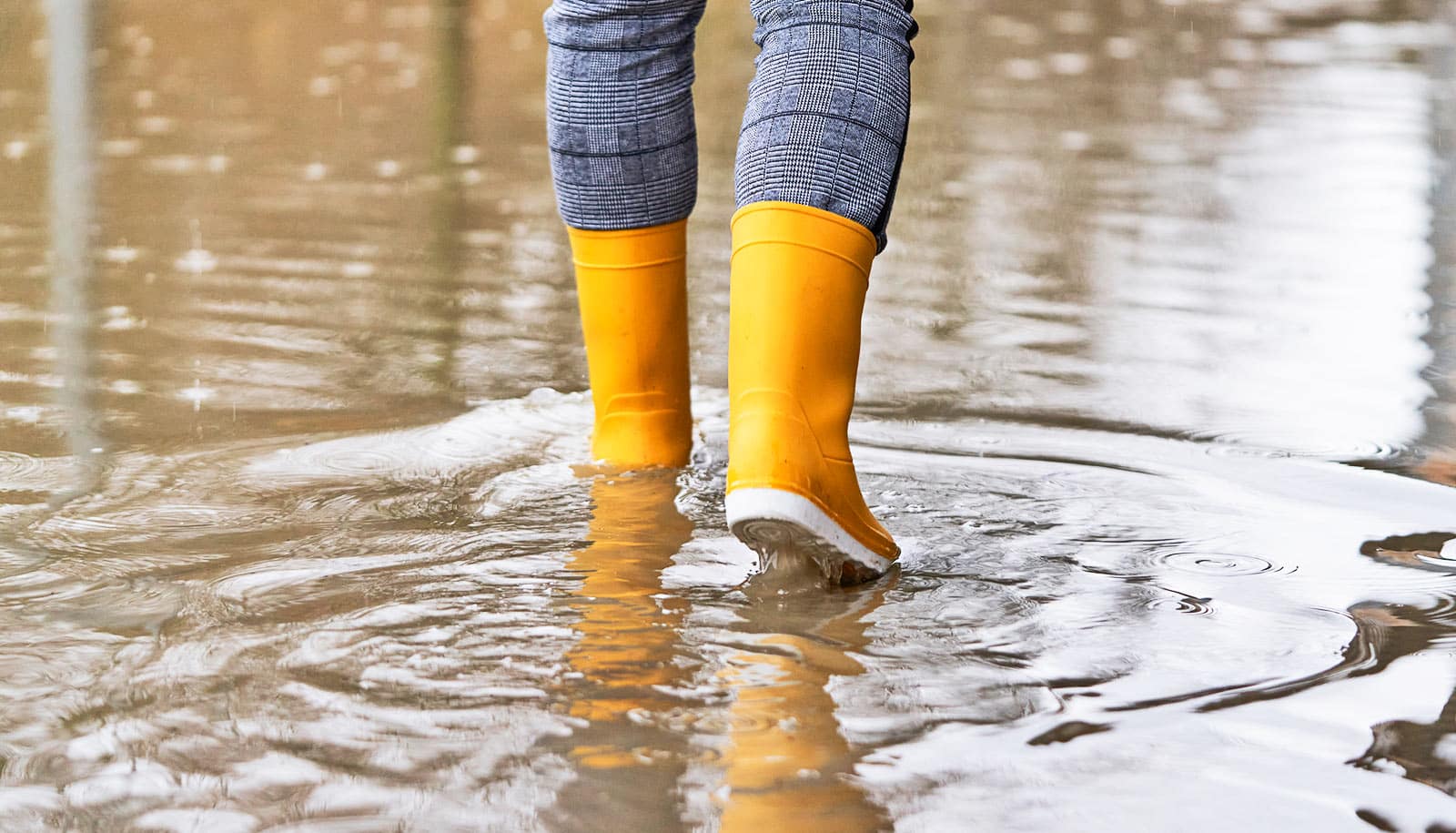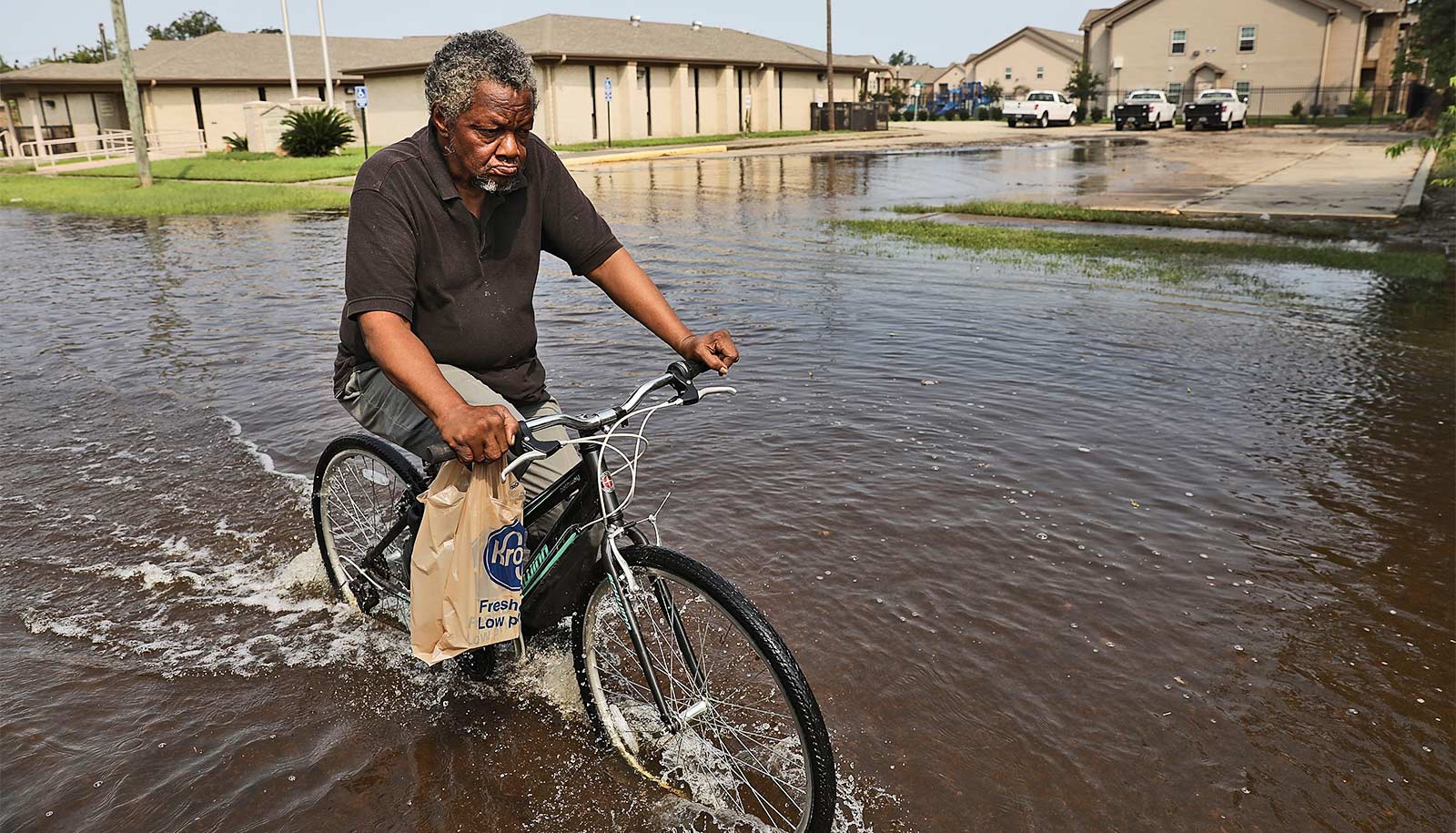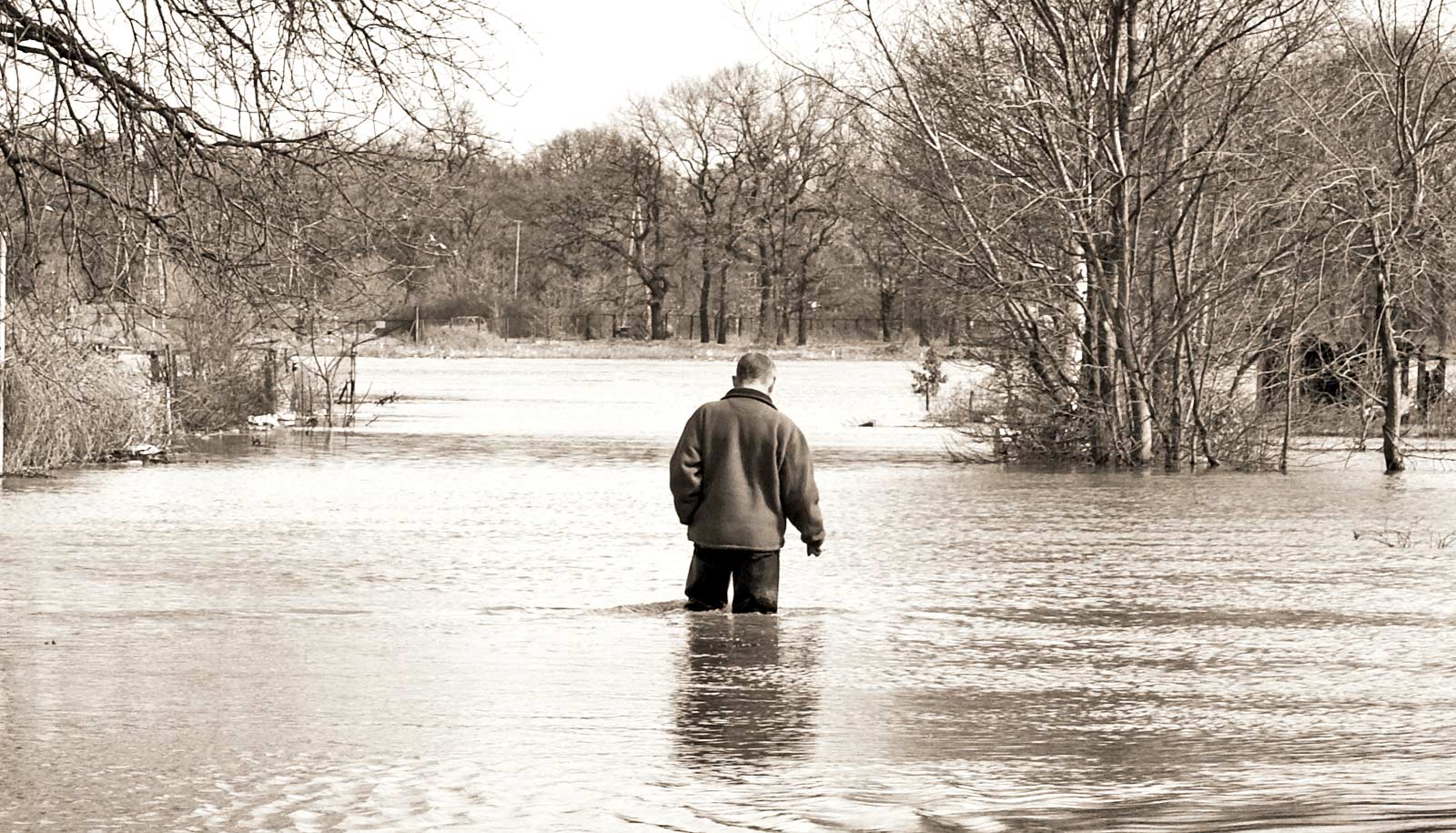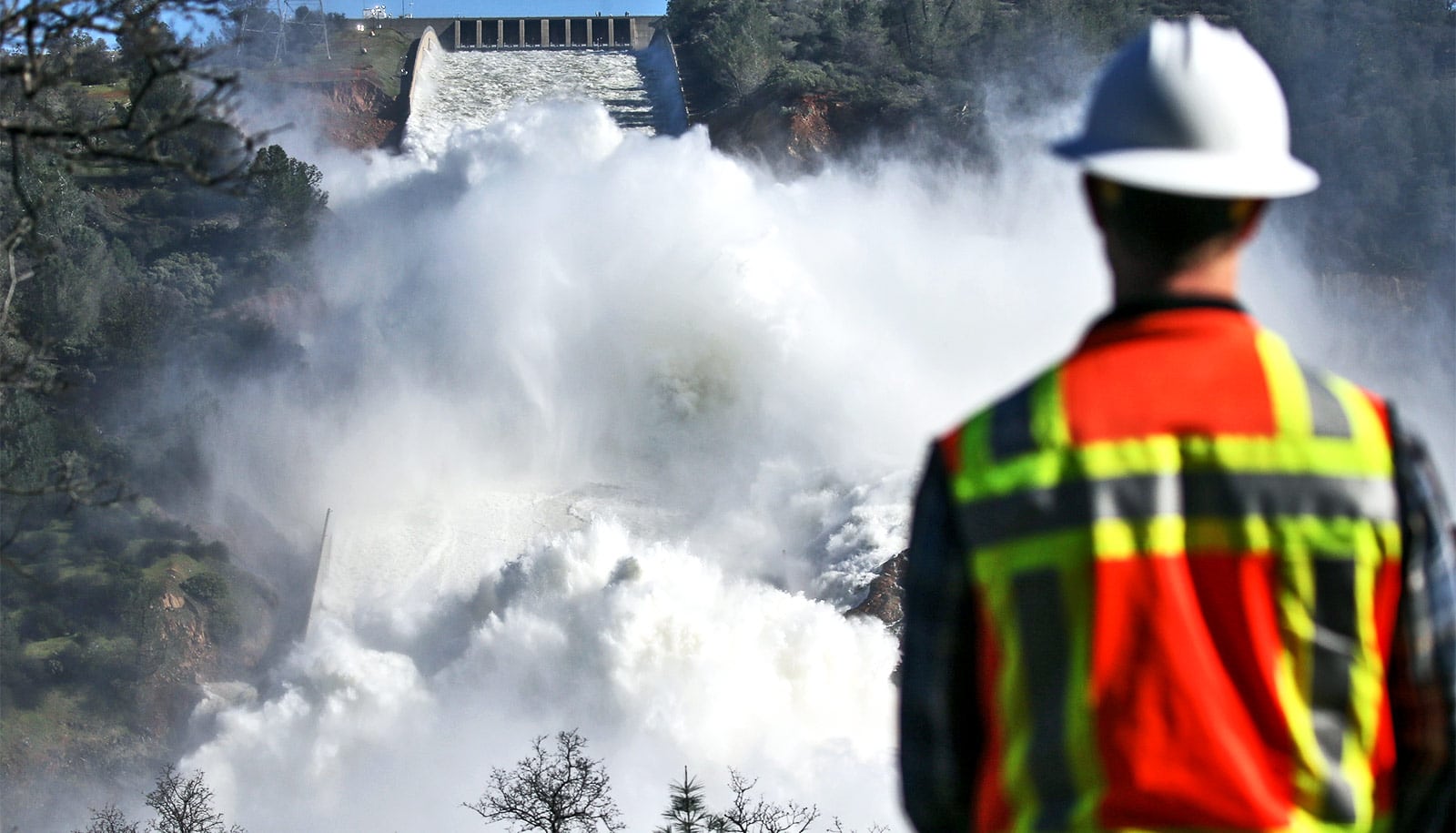One in 50 people living in two dozen coastal cities in the United States could experience significant flooding by 2050.
Published in Nature, the study combines satellite-obtained measurements of sinking land, also known as subsidence, with sea-level rise projections and tide charts to provide a new comprehensive look at the potential for flooding in a combined 32 cities along the Atlantic, Pacific, and Gulf coasts.
The study projects that in the next three decades as many as 500,000 people could be affected as well as a potential 1 in 35 privately owned properties damaged by flooding. The study also highlights the racial and socioeconomic demographics of those potentially affected.
“One of the challenges we have with communicating the issue of sea-level rise and land subsidence broadly is it often seems like a long-term problem, like something whose impacts will only manifest at the end of the century, which many people may not care about,” says lead author Leonard Ohenhen, a graduate student working with Manoochehr Shirzaei, associate professor at Virginian Tech’s Earth Observation and Innovation Lab. “What we’ve done here is focused the picture on the short term, just 26 years from now.”
Other increases compared to current estimates include:
- Between 500 and 700 more square miles of land flooded
- 176,000 to 518,000 more people affected
- 94,000 to 288,000 more properties exposed with an estimated value of $32 billion to $109 billion
“The whole purpose of this paper is to provide data to support decisions,” Shirzaei says. “Every city, every county has a flood resiliency plan in place. They are required by law to create that. But it’s likely nobody has received the entire picture until this study, which creates probably the first comprehensive picture of what’s happen in the not-too-distant future.”
“This study demonstrates that we can now measure vertical land motion at a sufficient scale to create a useful climate service that supports planning and management decisions on flooding,” says Robert J. Nicholls, a professor of climate adaptation at the University of East Anglia in the UK. “This approach has the potential to be applied in any city around the world, really supporting adaptation.”
Using highly accurate data points measured by space-based radar satellites, Shirzaei and his research team built some of the world’s first high-resolution depictions of the sinking land along the coast of the entire United States. Their work has previously revealed regions of the Atlantic coast to be sinking by as much as 5 millimeters per year.
This study revealed that 24 of the 32 coastal cities are currently sinking more than 2 millimeters per year and half of those cities have areas sinking more than global seas are rising. These numbers might seem small, but when combined with sea-level rise over time, it adds up to quite a significant shift, Ohenhen says.
“The analogy I have found that is really helpful in helping people understand this change is to think about a sinking boat,” he says. “Imagine you are in that boat with a steady leak, slowly causing the boat to sink. That leak symbolizes sea-level rise or broadly flooding,” he says.
“What would happen if it also starts raining? Even a minor rainfall or drizzle would cause the boat to sink more quickly than you thought it would. That’s what land subsidence does—even imperceptible millimeter land subsidence exacerbates existing coastal hazards.”
Along with the new flood projections, the study also revealed the 32 cities have a combined 131 flood control structures, such as levees, berms, or dikes, but that 50% of those are located on the California coast. Only three of the 11 Atlantic coast cities studied maintain levees or floodwalls.
“When we looked at it across the board, we found that there is a general unappreciation for flood protection, particularly on the Atlantic coast,” Ohenhen says. “And even the levees there often protect less than 10% of the city, compared to other cities on the Pacific or Gulf coasts where up to 70% is protected.”
Another first in the study is the consideration of racial and socioeconomic demographics related to the potentially affected areas.
In some cities the researchers examined, particularly those along the Gulf Coast, the potential increased exposure fell disproportionately on racial minorities. In other cities, the properties facing increased exposure were found to generally be of lesser value than the median property value of the area. And in a few cities, New Orleans and Port Arthur, Texas, particularly, these two demographics intersect, showing the areas with greatest potential risk to be disproportionately occupied by people of color who are also at an economic disadvantage when compared to the city as a whole.
“That was the most surprising part of the study,” Ohenhen says. “We found that there is racial and economic inequality in those areas in that there was an overrepresentation of historically marginalized groups potentially impacted as well as properties with significantly lower value than the rest of the cities. It really multiplies the potential impact to those areas and their abilities to recover from significant flooding.”
Shirzaei says he believes the study as a whole not only provides the clearest picture of potential flooding to date, but also should serve as a call to action for policymakers of those areas.
“Very often, we hear, ‘Oh, we didn’t know about land subsidence,’ or, ‘We didn’t know about that other factor,’ but this study will take away those excuses from everybody,” Shirzaei says.
Additional coauthors are from Virginia Tech; the India Institute of Science Education and Research in Punjab, India; and the University of East Anglia, United Kingdom.
Source: Travis Williams for Virginia Tech



